
Camino de Santiago: A culinary journey
Camino de Santiago gastronomy has always gone hand in hand with its history. Since its beginnings in the XI century, St. James Way has been taking good care of its pilgrims. The first inns that offered hospitality usually provided pilgrims with some kind of rich calorie broth made with fresh local produce (and sometimes dried meat). One of these meals, the traditional and flavorful garlic soup or Sopa de ajo is still served in many restaurants to evoke this traditional dish.
But the Camino de Santiago has evolved with time and has adapted to new pilgrims, especially since it was inscribed on the World Heritage List by UNESCO in 1993. But the road to Santiago still keeps the gastronomic traditions that are representative of all the different regions the modern pilgrim crosses. On the Camino, the union between gastronomy, history, and tradition becomes a reality. Good eats and excellent wine are the thread of its pleasure poetry.
As we describe several traditional meat dishes in the post below, we welcome vegetarians who are able to enjoy amazing fresh produce that is all locally grown and served at peak freshness throughout the Camino.
Starting in León, where our walking tour begins, we find a paradise for meat lovers. The star is Cecina, a special air-dried piece of beef (a procedure that is unique to this region of the world), that is finely sliced and tossed with extra virgin olive oil and fresh ground pepper: the gourmet version of beef jerky. It simply melts in your mouth.
But the hallmark of León’s hearty meals is the Cocido Maragato, typical from popular fireplaces from León to Astorga. It contains a soup with vegetables, chickpeas, and seven different kind of meats, that in the past used to be served to exhausted farmers, whose stomachs needed to be filled using a single dish with a good amount of protein and calories. It is a fairly heavy meal for a walking day, but we recommend you at least taste a little bit. It is a piece of history and a melting pot of flavors.
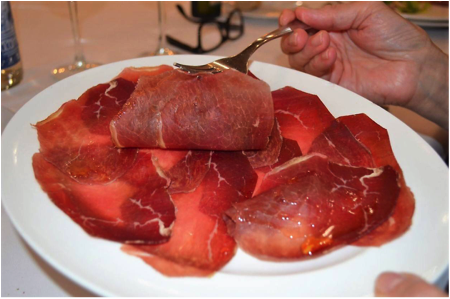
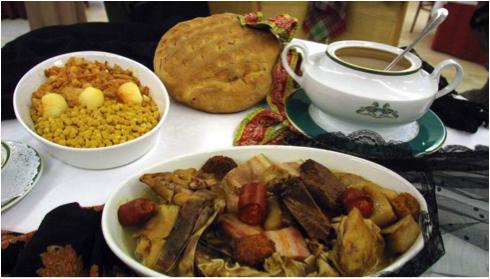
If you are not up to a hearty meal, you can always taste a multitude of tapas in its Barrio Húmedo, a delightful gastronomic quarter in the heart of León surrounded by intact Roman city walls.
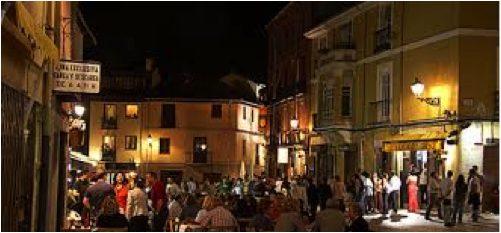
As you make your way from León to Astorga, you´ll be able to taste the famous Mantecadas de Astorga, a classic sweet pastry that dates back to early 1800. It contains basic ingredients (flour, eggs, sugar), but is a secret ancient recipe!

After Astorga, we enter El Bierzo, an extraordinary region famous for its wines. The Bierzo region is a very important area along the Camino, in which we´ll walk for two days until we enter Galicia. It holds a great variety of products, some of them guarded under its official certified origin by the department of agriculture and an extraordinary enology with seven varieties of grapes (don´t worry, we´ll dedicate a post in our blog to the enology of the Camino).
The culinary community of the Bierzo region contains many unique flavors and tastes. One of its specialties is the Botillo, a meat product made from different pieces of pig, cured, seasoned with local spices, and then smoked. Bierzo´s climate, the same that makes it possible for an excellent local wine to pair with our meals, also brings us an endless selection of fresh produce that can be tasted in salads and vegetable dishes.
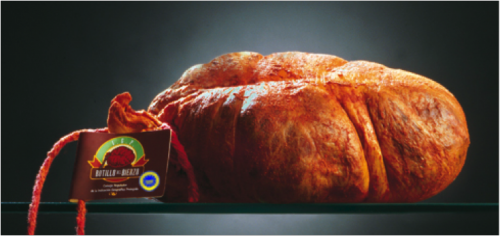
Finally, we enter the Galicia region in O Cebreiro. Get your palate ready! In Galicia, the sadness of ending our journey is overcome by its delicious gastronomic offerings. Products from both the land and the sea will be waiting us at our tables. Galicia is the perfect place to taste seafood and shellfish (scallops, mussels, clams, squid).
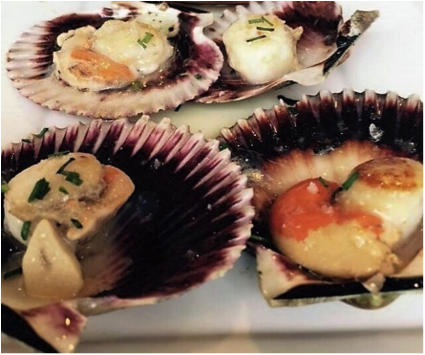
An interesting and very popular dish in Galicia is the Puntillitas, or baby calamari, deep fried with a very light and delightful batter and cooked to perfection. They are usually served with Pimientos de Padrón, local baby green peppers that are also deep fried. These peppers that only grow in the town of Padrón hold a secret: they are not hot, but very mild, but occasionally you´ll get one that will put your mouth on fire. No one has been able to explain this phenomenon so far…but they are full of flavor no matter which type you get.
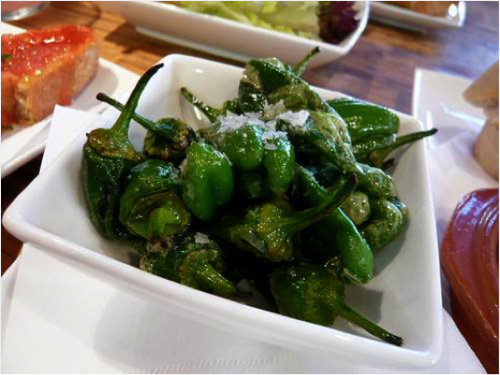
Don’t miss the traditional octopus or Pulpo a Feira, an authentic icon of Galician cuisine: boiled pieces of octopus tentacles served on a wooden plate (to get rid of the excess humidity) and tossed with local paprika and extra virgin olive oil. It is carefully cooked in special copper pots with precise timing for perfect consistency by designated women who hold the secret of the recipe (called Pulpeiras). There are even dedicated food fests to the Pulpo in many Galician villages. It is served with a local variety of potato that grows in Galician slopes called cachelo.
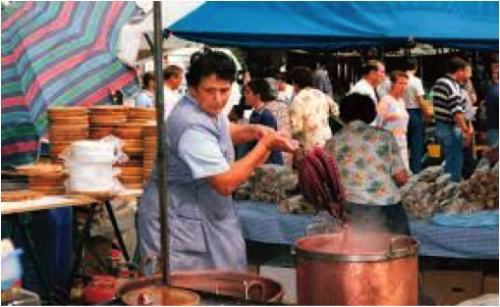
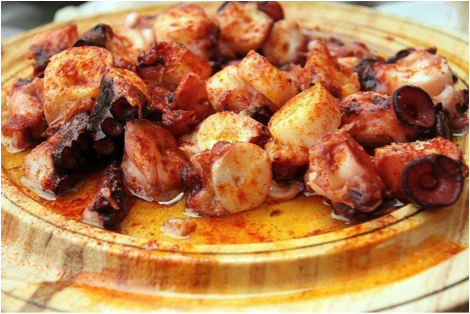
You’ll also love the Empanada, a large crusted savory pie usually filled with vegetables and fresh fish or meat. The empanada de Zamburiñas or baby scallop pie, is a typical dish in Galicia, the main Spanish region for the Camino de Santiago. Additionally, the Caldo Gallego is a hearty vegetable broth with potatoes, cabbage and beans, usually served on winter.
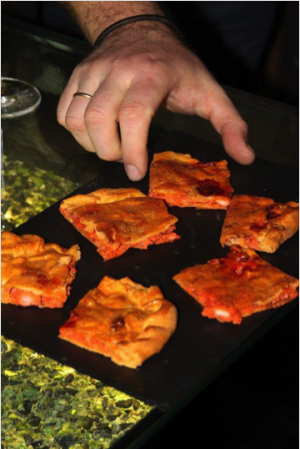
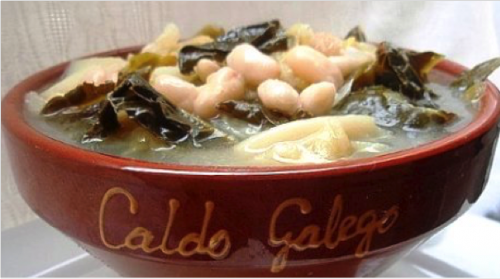
After some hours of walking, there’s nothing better than eating Lacón con Grelos. It’s a dish consisting of salted pork shoulder boiled with local green vegetables called grelos (similar to turnip greens), potatoes, and Galician chorizo sausage. As with every cocido (or stew) in Spain, the soup is served on the side. Mmm!
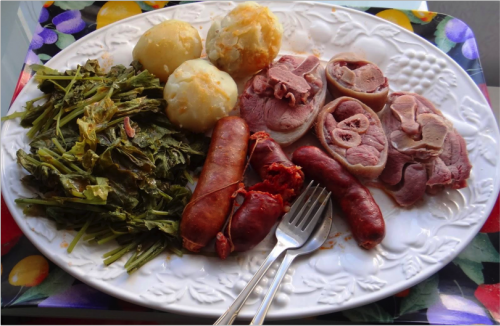
Galicia’s land also holds a particular breed of grass fed beef, Ternera Gallega, an internationally recognized product that is best made wood-fired as a thick prime rib to be later sliced and shared on the table.
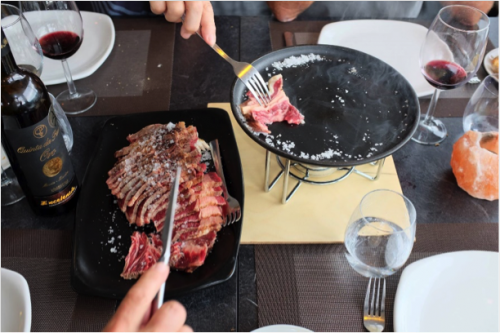
When it comes to dessert, you must try St. James cake: a traditional cake with a unique consistency, using ground almonds as flour.
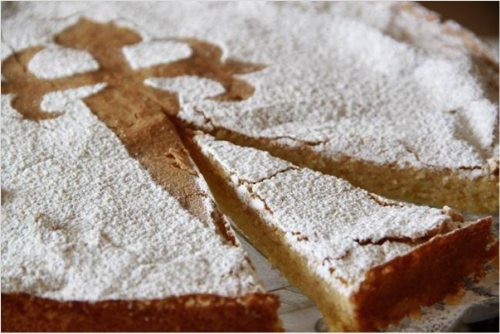
Santiago the Compostela, our final stage of the Camino, is the food and wine mecca, gathering all the products from the region that can be tasted while we walk its crowded streets.
As you can see, every step of the Camino guides you not only to a different landscape but also through a different flavor and aroma. With Duperier´s Authentic Journeys, all the restaurants in which we stop, are carefully selected by our CEO Juan Carlos, offering scrumptious meals, and tasting the best of the Camino.
If you like this post, you may also like to read: